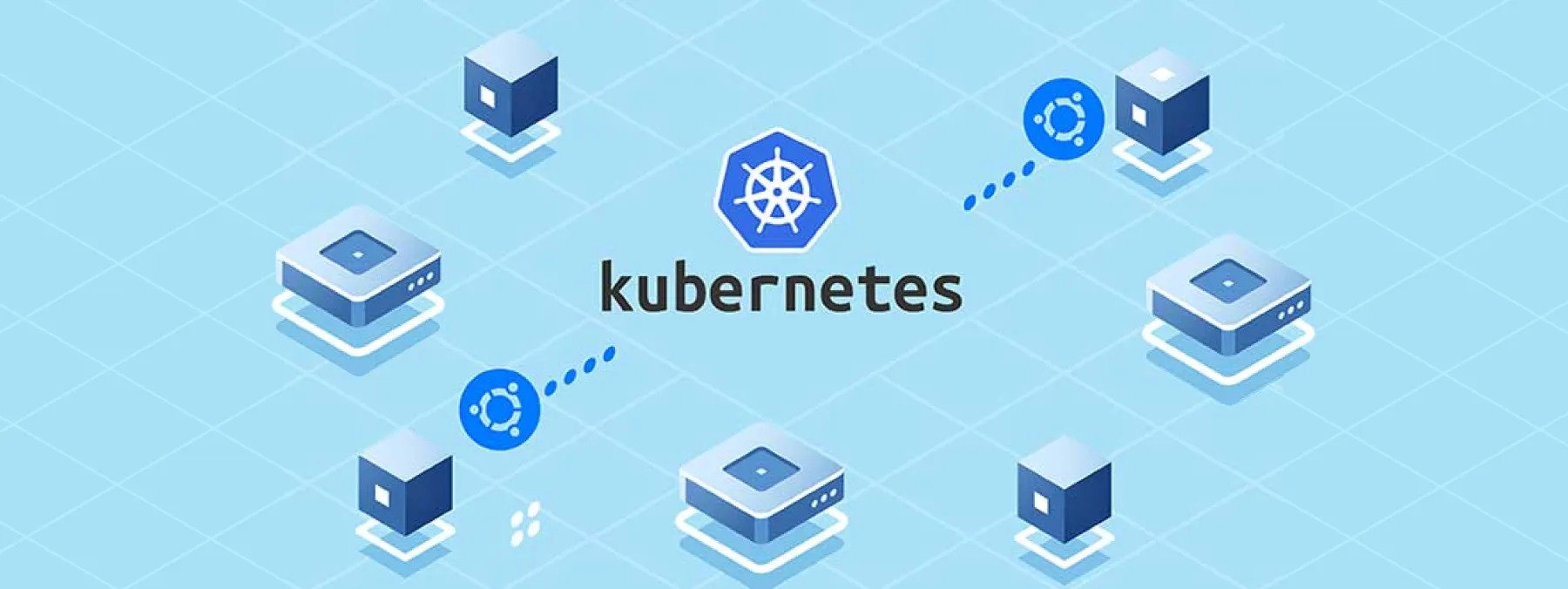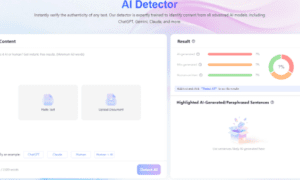Kubernetes has become the backbone of modern cloud native applications, enabling organizations to manage containerized workloads at scale. Originally developed by Google and now maintained by the Cloud Native Computing Foundation (CNCF), Kubernetes enables organizations to automate deployment, scaling, and management of applications across distributed environments. Its ability to handle complex workloads efficiently makes it an indispensable tool for DevOps teams, SREs, and platform engineers worldwide.
However, managing Kubernetes effectively requires more than just initial setup and deployment. Keeping Kubernetes up to date is essential for maintaining a secure, high-performance, and scalable infrastructure. Each new version of Kubernetes introduces critical security patches, performance enhancements, and new features designed to improve stability and functionality.
Conversely, delaying upgrades can expose organizations to security vulnerabilities, deprecated APIs, and operational inefficiencies, leading to unplanned downtime and costly maintenance issues.
As Tim Grassin, CEO of Kubegrade, explains: “Kubernetes is a powerful tool, but only if it’s managed correctly. Staying current with upgrades ensures businesses can fully leverage Kubernetes’ scalability while avoiding risks associated with outdated versions.”
Despite the clear benefits, many organizations hesitate to upgrade due to concerns over complexity, downtime, and compatibility issues. Without a structured approach, Kubernetes upgrades can disrupt mission-critical workloads, impacting service availability and business continuity.
This article provides a step-by-step guide to mastering Kubernetes upgrades, ensuring organizations can maintain stability, prevent downtime, and optimize scalability while transitioning to newer versions.
Why Kubernetes Upgrades Matter
Kubernetes follows a rapid release cycle, with new versions being introduced every four months. Each release includes crucial security patches, performance optimizations, and new features that enhance the platform’s efficiency and stability. Ignoring these upgrades can lead to security risks, compatibility issues, and operational inefficiencies, making it harder to maintain a reliable infrastructure. The following are the key reasons why staying up to date with Kubernetes upgrades is essential.
- Security & Compliance: Preventing Vulnerabilities
Kubernetes is widely used for orchestrating mission-critical applications, making it a prime target for cyber threats. Older Kubernetes versions often contain known vulnerabilities that attackers can exploit to gain unauthorized access, disrupt services, or compromise data integrity.
Each new Kubernetes release addresses security loopholes by introducing patches that protect against newly discovered exploits. Delaying upgrades can leave clusters exposed to threats such as privilege escalation attacks, API server vulnerabilities, and container escape exploits.
Additionally, many industries require organizations to meet compliance standards like SOC 2, GDPR, HIPAA, and ISO 27001. Running an outdated version of Kubernetes may lead to non-compliance, putting businesses at risk of regulatory penalties.
Caleb Fornari, CTO of Kubegrade, warns, “Security should never be an afterthought. Running outdated Kubernetes versions increases the attack surface, making clusters vulnerable to exploits that could have been prevented with timely upgrades.”
- Performance Enhancements: Improving Efficiency and Resource Management
Kubernetes upgrades don’t just fix security issues—they also introduce performance improvements that optimize cluster efficiency. Each release enhances the way Kubernetes schedules workloads, manages resources, and balances traffic across nodes.
Key performance improvements in recent Kubernetes versions include:
- Better container runtime efficiency → Reduces CPU and memory overhead.
- Improved scheduler algorithms → Ensures optimal pod placement and resource utilization.
- Faster startup times for control plane components → Enhances cluster responsiveness.
- Optimized network performance → Reduces latency for service-to-service communication.
These enhancements help organizations achieve lower infrastructure costs, better responsiveness for applications, and improved overall system performance.
- Scalability & Reliability: Optimized Auto-Scaling and Workload Balancing
Scalability is at the core of Kubernetes, enabling applications to handle fluctuating workloads efficiently. However, older Kubernetes versions may lack the latest auto-scaling features, leading to inefficient resource allocation and poor cluster performance.
Upgrading to the latest version unlocks improvements in:
- Cluster Autoscaler & Horizontal Pod Autoscaler (HPA): More precise scaling based on CPU, memory, and custom metrics.
- Better load balancing mechanisms: Ensures traffic is evenly distributed across pods.
- Dynamic resource allocation: Improves the ability to handle unexpected traffic spikes without over-provisioning resources.
Tim Grassin emphasizes that: “Scalability isn’t just about adding more nodes—it’s about optimizing how Kubernetes schedules and distributes workloads. Keeping up with upgrades ensures businesses can handle growth without hitting bottlenecks.”
- Support & Deprecation Risks: Avoiding Maintenance Challenges
Kubernetes versions have a limited support window—typically 12 to 14 months before they reach end of life (EOL). Once a version is no longer supported:
- It stops receiving security patches, leaving the cluster vulnerable.
- Bug fixes are no longer provided, leading to unresolved performance issues.
- Cloud providers like AWS EKS, Azure AKS, and Google GKE discontinue support, forcing organizations to upgrade under pressure.
Additionally, each Kubernetes upgrade introduces API deprecations and removals, meaning that workloads using outdated APIs may break if not updated. Running an unsupported Kubernetes version makes maintenance harder, increasing technical debt and potential downtime.
Understanding Kubernetes Upgrade Types
Kubernetes follows a structured versioning system based on Semantic Versioning (SemVer), formatted as vX.Y.Z (e.g., v1.27.3), where:
- X (Major Release): Introduces significant changes, possibly breaking backward compatibility.
- Y (Minor Release): Adds new features and deprecates older ones while maintaining general compatibility.
- Z (Patch Release): Focuses on bug fixes, security patches, and stability improvements.
Understanding these upgrade types is essential for planning and executing Kubernetes upgrades without disrupting workloads.
- Minor vs. Major Upgrades: Compatibility and Process
Kubernetes typically releases a new minor version every four months, while major releases are less frequent but bring the most significant changes. Each minor upgrade may introduce new features, performance improvements, and API deprecations, while major upgrades may break backward compatibility.
Minor Upgrades (e.g., v1.26 → v1.27)
- Generally backward compatible but may deprecate APIs or modify default behaviors.
- Often include feature enhancements, security updates, and performance optimizations.
- Require thorough testing to ensure workloads continue running smoothly.
- Typically support in-place upgrades with minimal downtime when properly planned.
Major Upgrades (e.g., v1.x → v2.0)
- Introduce fundamental changes that may break existing workloads.
- Often involve API changes, requiring application and infrastructure adjustments.
- May require a multi-step migration strategy rather than a simple upgrade process.
- Not common—Kubernetes has remained in the v1.x series since its inception.
- Patch Updates: Fixing Security Flaws and Minor Issues
Patch updates (e.g., v1.27.1 → v1.27.3) are small but critical because they:
- Fix security vulnerabilities that attackers could exploit.
- Resolve performance bugs that impact cluster stability.
- Address minor reliability issues to improve overall cluster health.
Patch upgrades are non-disruptive, meaning they can be applied without requiring significant application changes. Most Kubernetes distributions, including Amazon EKS, Google GKE, and Azure AKS, automatically apply these patches to keep clusters secure.
Best Practices for Patch Updates:
- Enable automated patching for managed Kubernetes services.
- Regularly check release notes for any potential side effects.
- Apply patches promptly to prevent security risks.
- Kubernetes API Changes: Deprecations and Breaking Changes
Each Kubernetes upgrade cycle may introduce API deprecations, requiring teams to adjust their workloads accordingly. If deprecated APIs are still in use, an upgrade may cause application failures or cluster instability.
Understanding Kubernetes API Deprecations
- Deprecated APIs are marked for removal in future releases.
- Removed APIs no longer exist in the latest Kubernetes version, causing workloads using them to fail.
- API upgrades may include new parameters, authentication models, or behaviors.
Example of API Deprecation
In Kubernetes v1.22, the extensions/v1beta1 API was removed. Workloads relying on this API for Ingress controllers had to migrate to networking.k8s.io/v1 before upgrading.
Step-by-Step Guide to a Kubernetes Upgrade
Upgrading Kubernetes is a critical yet complex process that requires careful planning to minimize disruptions and ensure cluster stability. A well-executed upgrade follows a structured, step-by-step approach, allowing teams to maintain uptime, preserve data integrity, and optimize performance. Here is how to upgrade Kubernetes effectively.
- Check Current Version: Identify the Running Version
Before starting an upgrade, it’s essential to determine the current Kubernetes version and compare it with the latest available version. Running an outdated version may require multi-step upgrades, as Kubernetes only supports upgrades within two minor versions (e.g., you can upgrade from v1.26 to v1.27 but not directly to v1.28).
- Review Kubernetes Release Notes: Identify Breaking Changes & New Features
Every Kubernetes release introduces new features, API changes, security patches, and deprecations. Reviewing the official Kubernetes release notes is crucial to avoid compatibility issues.
Key Areas to Focus On:
- Breaking changes: Any removed APIs or changes that could impact workloads.
- Feature updates: Improvements in networking, security policies, or scheduling.
- Deprecations: APIs, flags, or objects that are being phased out.
- Upgrade Cluster Components: Control Plane, Nodes, and Workloads
A Kubernetes cluster upgrade is done in phases, starting with the control plane (master nodes), followed by worker nodes and applications.
For self-managed clusters, upgrade the control plane first to ensure compatibility with the new Kubernetes version.
For managed services (EKS, GKE, AKS), control plane upgrades are handled automatically, but users must manually upgrade worker nodes.
- Upgrade Node Pools & Worker Nodes: Drain, Upgrade, and Rejoin
Once the control plane is upgraded, the next step is upgrading worker nodes in a rolling fashion.
- Validate & Test Applications: Ensuring Stability
Once all nodes are upgraded, perform a comprehensive validation of workloads, services, and networking to confirm cluster stability. In simple terms, after upgrading, check for any issues.
- Monitor Performance Post-Upgrade
Even after a successful upgrade, continuous monitoring is required to detect potential regressions or unexpected behavior.
By following the aforementioned structured approach, teams can reduce downtime, avoid compatibility issues, and maintain a highly available Kubernetes environment.
Automating Kubernetes Upgrades for Long-Term Success
Upgrading Kubernetes manually can be a complex and time-consuming task, involving careful planning, version compatibility checks, and extensive testing to avoid disruptions. As Kubernetes adoption grows, organizations must automate their upgrade processes to maintain security, reliability, and scalability without excessive operational overhead.
Automating Kubernetes upgrades ensures that:
- Clusters remain secure with the latest patches.
- Application downtime is minimized during updates.
- Version consistency is maintained across different environments.
- Scalability is enhanced, allowing cluster
- s to grow with demand.Let’s take a look at key automation strategies that ensure smooth, predictable upgrades.
- Using Managed Kubernetes (EKS, AKS, GKE) for Seamless Upgrades
Many organizations opt for managed Kubernetes services to offload upgrade complexities. Cloud providers like Amazon EKS, Azure AKS, and Google GKE handle control plane upgrades and streamline worker node updates.
Advantages of Managed Kubernetes Upgrades
- Automated Control Plane Updates: Cloud providers automatically handle control plane upgrades with minimal intervention.
- Simplified Node Management: Node pools can be upgraded in rolling fashion to prevent downtime.
- High Availability & Resilience: Upgrades are designed to ensure zero-downtime transitions.
- Security Patch Management: Critical vulnerabilities are patched automatically.
- Kubernetes Operators & GitOps for Continuous Deployment
What Are Kubernetes Operators?
Kubernetes Operators extend Kubernetes capabilities by automating complex operational tasks, including cluster upgrades, scaling, and self-healing. Operators monitor cluster state and execute predefined upgrade actions automatically, reducing the need for manual intervention.
Examples of Kubernetes Operators for Upgrades
- Cluster API (CAPI): Automates Kubernetes lifecycle management.
- Kured (Kubernetes Reboot Daemon): Automatically reboots nodes after security patches.
- EKS Blueprints Operator: Simplifies infrastructure updates for Amazon EKS.
GitOps for Automated Kubernetes Upgrades
GitOps applies declarative version control to Kubernetes upgrades. Instead of making manual changes, teams store cluster configurations in Git, and tools like ArgoCD and Flux ensure Kubernetes clusters remain in sync with the desired state.
How GitOps Automates Kubernetes Upgrades
- Store Kubernetes manifests in a Git repository.
- Define Helm charts or Kubernetes versions for automation.
- GitOps tools like ArgoCD or Flux detect version changes and apply updates automatically.
- Rollback is straightforward if an issue occurs.
- CI/CD Pipelines for Staged Rollouts to Prevent Downtime
A well-designed CI/CD pipeline enables progressive Kubernetes upgrades, reducing the risk of downtime and service disruptions. Instead of rolling out updates all at once, staged rollouts deploy updates incrementally while monitoring application stability.
Best Practices for Staged Kubernetes Rollouts
- Canary Deployments: Gradually roll out updates to a small subset of nodes before full deployment.
- Blue-Green Deployments: Maintain two environments (old and new) and switch traffic once the new version is stable.
- Feature Flags: Control upgrade visibility and rollback easily if issues arise.
- Automated Testing & Monitoring: Ensure new versions pass validation before rollout.
By adopting these automation strategies, businesses can reduce operational risk, maintain high availability, and improve Kubernetes cluster resilience over time.
In conclusion, Kubernetes is constantly evolving, and organizations that stay ahead of the upgrade cycle will gain a competitive edge. Regular upgrades not only secure your infrastructure but also unlock new capabilities that improve scalability, cost-efficiency, and developer productivity. By adopting managed services, GitOps, and CI/CD pipelines, DevOps teams can ensure that Kubernetes upgrades become seamless, automated, and stress-free.
The path to scalable, high-performance cloud applications starts with a strong Kubernetes upgrade strategy.
Are you ready to take your Kubernetes upgrades to the next level? Start automating today!





























